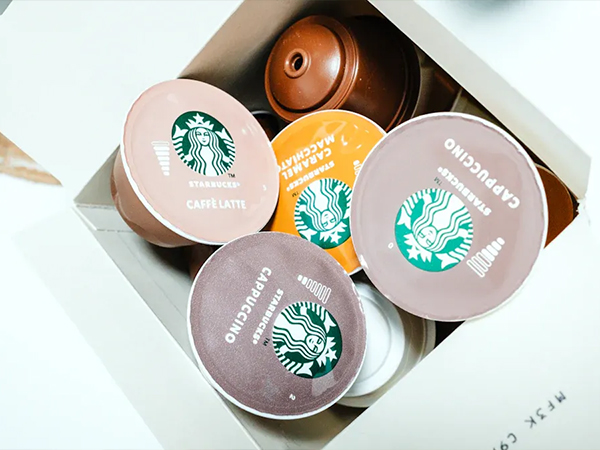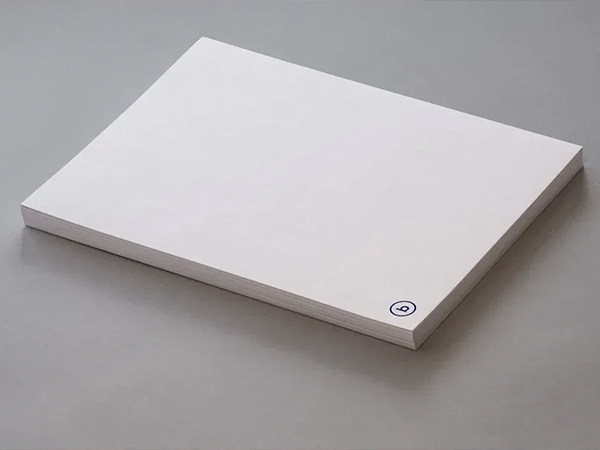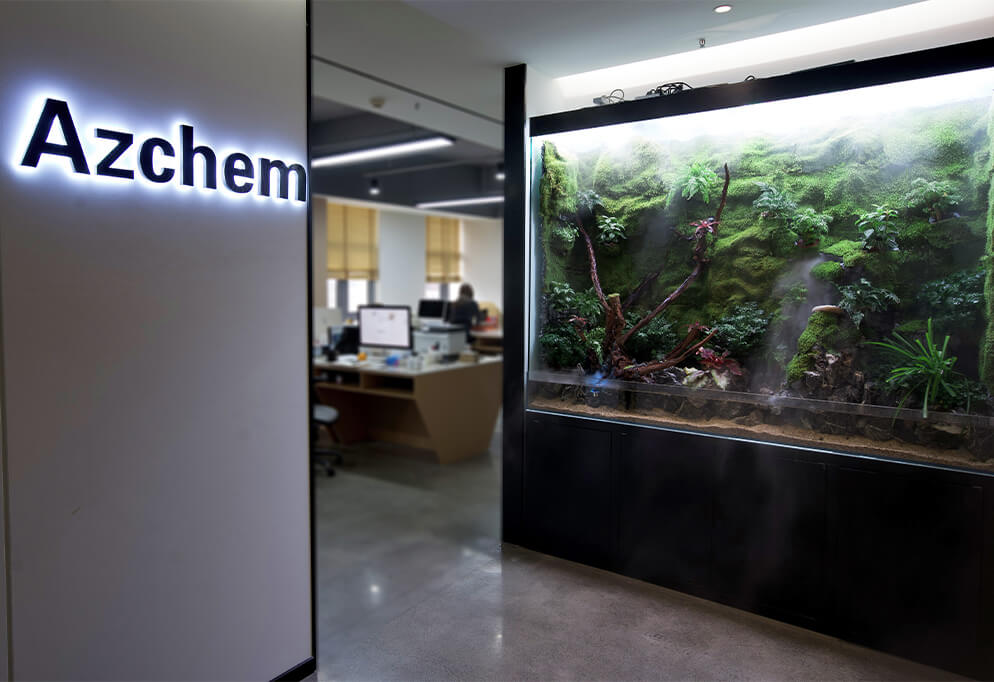
You face increasing pressure to choose safer, eco-friendly food packaging. Regulatory bans in regions like the EU, United States, and Asia Pacific push companies to eliminate PFAS-based coatings. Major retailers and food service brands now prioritize fluorine-free oil repellent solutions to protect consumer health and support environmental sustainability.
-
U.S. states and European countries have enacted PFAS bans since 2018.
-
Food packaging market trends show rapid growth in fluorine-free products.
-
Consumers demand sustainable, compostable packaging for everyday items.
Key Takeaways
-
Fluorine-free oil repellents protect food by eliminating harmful PFAS chemicals that can contaminate food and harm health.
-
Using fluorine-free coatings helps your packaging meet strict global regulations and avoid costly penalties or recalls.
-
These coatings support compostable and recyclable packaging, reducing pollution and promoting environmental sustainability.
-
Fluorine-free oil repellents provide strong resistance to oil, grease, and moisture while keeping packaging flexible and printable.
-
Many food packaging types, like fast food wrappers and bakery bags, benefit from fluorine-free coatings for safer, cleaner packaging.
-
Consumer demand and regulations are driving rapid growth in fluorine-free packaging, giving brands a competitive edge.
-
Switching to fluorine-free oil repellents is easy with standard production methods and offers long-term cost savings.
-
Innovations in bio-based and nature-inspired materials promise even better, safer packaging solutions in the future.
Health & Safety

Chemical-Free Protection
Reduced Food Contamination
You want to keep your food packaging free from harmful chemicals. Traditional grease-resistant coatings often contain PFAS, including PFOA and PFOS. These chemicals do not break down easily and can migrate from packaging into your food. Scientific reviews show that PFAS contamination appears in a wide range of foods, from fast food to dairy and seafood. Researchers have found that these substances accumulate in the body and may cause toxic effects, especially in infants and other vulnerable groups. The U.S. Environmental Protection Agency recognizes that PFAS exposure can occur through food contact materials, such as microwave popcorn bags and fast food wrappers. By choosing a fluorine-free oil repellent, you eliminate these persistent chemicals from your packaging and reduce the risk of food contamination.
-
Fluorine-containing oil-proof agents release PFOS and PFOA, which threaten both human health and the environment.
-
Significant fluoride levels have been detected in fast food packaging, raising concerns about chemical exposure.
-
Fluorine-free oil repellents, such as those based on wax or silicone, provide effective oil and water resistance without introducing hazardous substances.
-
These alternatives offer strong mechanical properties, recyclability, and excellent barrier performance.
Safer for Consumers
You protect your customers when you remove PFAS from your packaging. Studies link PFOA and PFOS to serious health risks, including cancer. Laboratory research shows that PFOA exposure increases the risk of tumors in organs like the liver and pancreas. Human studies also suggest higher risks of testicular and kidney cancers among people exposed to these chemicals. The International Agency for Research on Cancer classifies PFOA as carcinogenic to humans. By switching to a fluorine-free oil repellent, you help prevent these risks and support safer food packaging for everyone.
Regulatory Compliance
Meeting Global Standards
You must comply with strict international regulations to keep your products on the market. Amazon Chemicals Limited’s fluorine-free oil repellent meets the highest safety standards worldwide. The table below summarizes key regulations:
|
Regulation/Standard |
Jurisdiction |
Scope and Key Provisions Related to PFAS in Food Packaging |
|---|---|---|
|
REACH (Registration, Evaluation, Authorization and Restriction of Chemicals) |
European Union |
Classifies several PFAS as Substances of Very High Concern (SVHC), requires authorization for use, promotes safer alternatives, and sets limits on PFAS migration in food contact materials. Includes PFAS under Persistent Organic Pollutants (POPs) Regulation. |
|
U.S. FDA Guidelines |
United States |
Oversees food packaging safety, sets allowable PFAS levels, monitors PFAS presence in food contact materials. Some U.S. states have implemented stricter bans on PFAS in packaging. |
|
GB 9685-2016 (Additives Standard) |
China |
Specifies allowed additives in food contact materials, explicitly excludes PFAS substances from permitted additives, applies broadly to substances used in food packaging. |
Avoiding Banned Substances
You avoid costly penalties and protect your brand by using compliant materials. Regulatory agencies issue advisory letters, impose fines, and can even recall products that fail to meet standards. Some companies have faced production halts, import refusals, and reputational damage due to non-compliance. By adopting a fluorine-free oil repellent, you ensure your packaging meets global requirements and avoids banned substances, keeping your business safe and competitive.
Environmental Impact
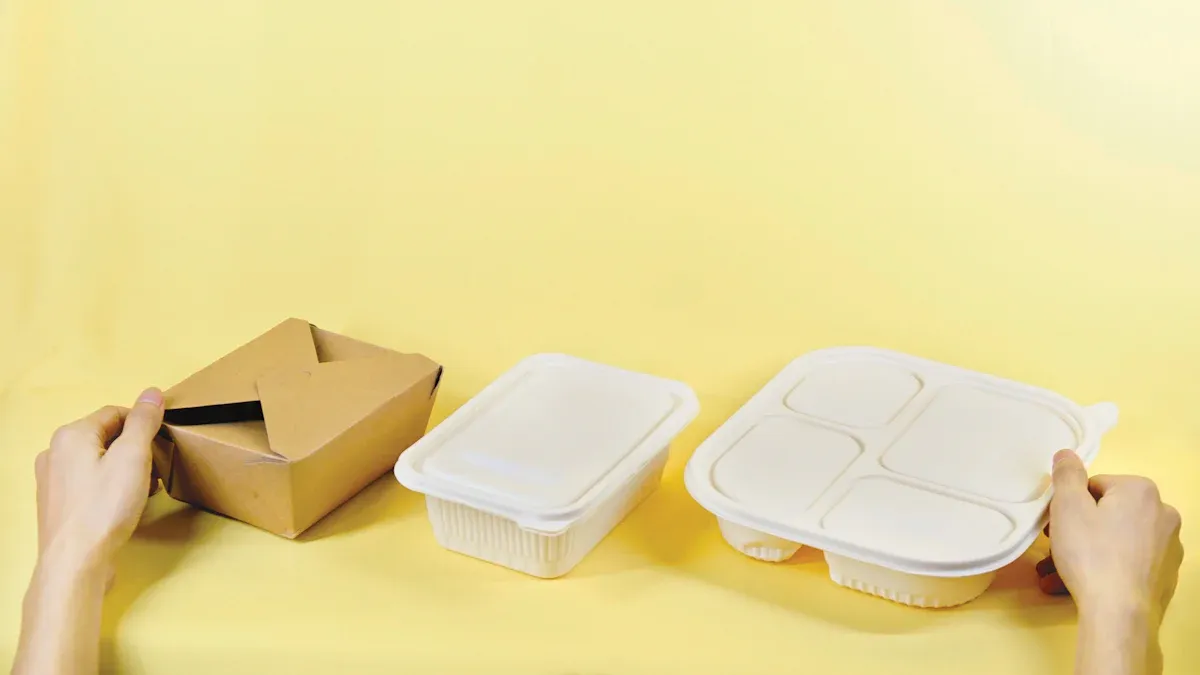
Biodegradability
Compostable Packaging
You want your packaging to break down naturally and return to the environment without leaving harmful residues. Fluorine-free oil repellent technology supports this goal by avoiding persistent chemicals that linger in soil and water. When you choose compostable packaging, you help reduce landfill waste and support a circular economy. Many third-party organizations verify compostability and chemical safety for food packaging.
-
The Biodegradable Products Institute (BPI) certifies compostable packaging and requires testing to confirm no fluoro-chemicals are present.
-
The Compost Manufacturers Alliance (CMA) certifies compostable products, disallowing intentionally added fluorinated chemicals such as PFAS and requiring testing reports showing less than 100 ppm total fluorine.
-
Additional certifications, such as GreenScreen for Single-Use Food Service Ware (FSW), Forest Stewardship Council (FSC), and Sustainable Forestry Initiative (SFI), focus on sustainable sourcing and chemical safety.
These certifications give you confidence that your packaging meets strict standards for compostability and environmental safety.
Reduced Pollution
You reduce pollution when you switch to fluorine-free oil repellent solutions. Traditional PFAS-based coatings persist in the environment and contaminate water, soil, and wildlife. By eliminating these chemicals, you help prevent long-term pollution and protect ecosystems. Compostable packaging with fluorine-free coatings breaks down safely, leaving no toxic residues behind. This approach supports cleaner communities and healthier natural resources.
Sustainable Choice
Eco-Friendly Materials
You make a responsible choice when you select eco-friendly materials for your packaging. Fluorine-free oil repellent coatings use wax-based or silicone-based formulations that do not rely on perfluorinated chains. These materials align with global sustainability goals and help you meet the expectations of regulators and consumers. Many brands now require certifications such as EU Ecolabel and Bluesign® to validate their environmental claims and avoid greenwashing.
Support for Green Initiatives
You support green initiatives by adopting packaging that aligns with circular economy principles. Regulatory frameworks like EU REACH and US state-level PFAS bans drive the shift toward safer, more sustainable packaging. Major industries, including food packaging, now prioritize fluorine-free solutions to reduce their carbon footprint and comply with evolving standards. Companies like IKEA and Decathlon have already committed to eliminating PFAS from their supply chains. You can join this movement by choosing packaging that meets recognized certifications and supports your corporate sustainability goals.
🌱 By choosing fluorine-free oil repellent packaging, you demonstrate leadership in environmental responsibility and help shape a cleaner future for everyone.
Benefits of Fluorine-Free Oil Repellent
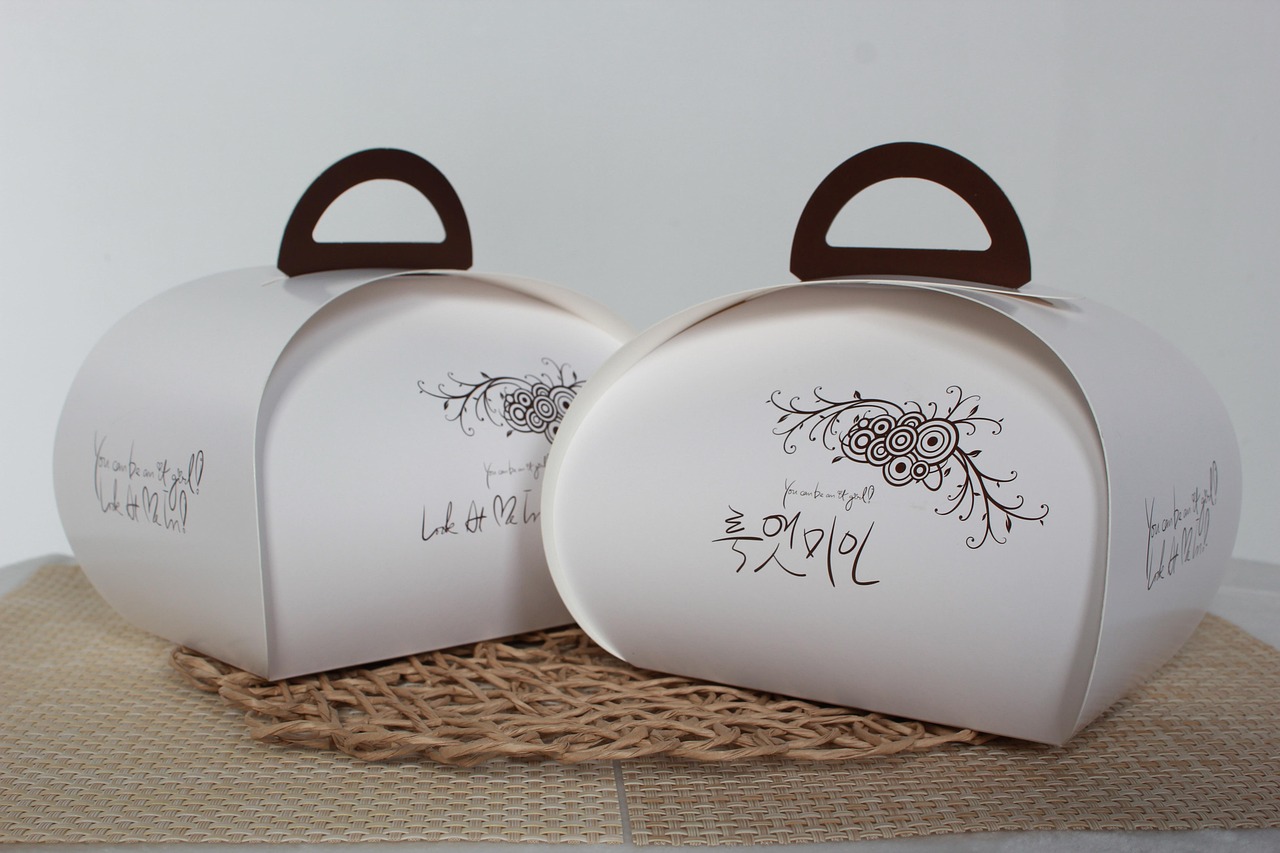
Superior Barrier Properties
Oil & Grease Resistance
You need packaging that stands up to the toughest foods. Greasy burgers, fried snacks, and oily pastries can quickly soak through ordinary paper. With a fluorine-free oil repellent, you get a powerful barrier that keeps oil and grease from penetrating the packaging. Amazon Chemicals’ wax-based and silicone-based formulations modify the surface energy of paper, creating a uniform film that repels fats and oils.
Laboratory studies confirm the effectiveness of these coatings. For example, researchers have used bio-based polymers like carboxymethyl cellulose and collagen fiber to create stable, fluorine-free coatings. These coatings achieve top scores in oil repellency tests, with kit ratings as high as 12 out of 12. This means your packaging can handle even the greasiest foods without leaking or staining.
|
Coating Material / Method |
Oil Resistance Indicator (Kit Rating) |
Water Resistance Indicator (Cobb Value, g/m²) |
Water Contact Angle (°) |
Air Permeability (μm/Pa·s) |
Mechanical Strength (kN/m) |
|---|---|---|---|---|---|
|
Dimer acid-based waterborne polyurethane |
10/12 |
4.9 |
N/A |
N/A |
N/A |
|
Chitosan + cardanol glycidyl ether |
8/12 |
1.96 |
N/A |
N/A |
N/A |
|
Chitosan + collagen fibers + polydimethylsiloxane + nano-silica |
12/12 |
N/A |
141 |
N/A |
N/A |
|
Carboxymethyl cellulose / collagen fiber coating |
12/12 |
1.12 |
N/A |
0.3 |
4.19 |
You can see that fluorine-free coatings deliver outstanding oil resistance and maintain strong mechanical properties.
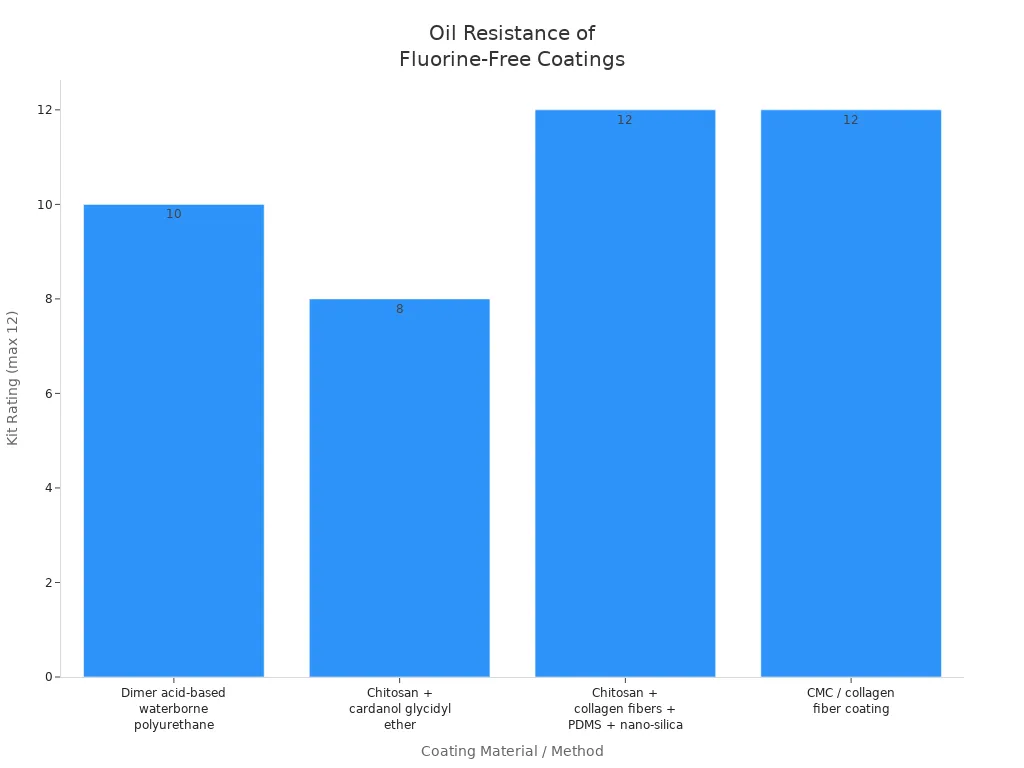
Moisture Protection
You also need packaging that protects against moisture. Foods like sandwiches, baked goods, and takeout meals often release steam or contain sauces. Amazon Chemicals’ fluorine-free oil repellent provides excellent moisture resistance. The advanced formulations achieve low Cobb values, often below 1.5 g/m², which means water and other liquids cannot easily penetrate the paper.
A study on cellulose-based food packaging coated with chitosan and carnauba wax emulsions showed a Cobb60 value of just 7.5 g/m² and a water contact angle of 130.9°. These results prove that you can rely on fluorine-free coatings to keep food fresh and packaging intact, even in humid or high-moisture environments.
Performance on Paper
Maintains Printability
You want your packaging to look as good as it performs. Amazon Chemicals’ wax-based and silicone-based coatings maintain the printability of paper substrates. You can apply vibrant graphics, logos, and product information without smudging or fading. The coatings form a thin, uniform layer that does not interfere with ink adhesion or color quality. This allows you to create attractive, branded packaging that stands out on the shelf.
Preserves Flexibility
You need packaging that bends, folds, and wraps without cracking. The fluorine-free oil repellent preserves the natural flexibility of paper. You can use it for fast food wrappers, liners, bags, and more. The coatings withstand high heat—up to 100°C—so you can use them for hot foods and reheating applications. The paper remains easy to handle and shape, supporting a wide range of packaging designs.
Tip: Choose the right formulation for your needs. Azfc® 60F works well for dry or mildly oily foods, while Azfc® 90F offers enhanced heat resistance for more demanding applications.
You get a solution that combines superior barrier properties, excellent printability, and reliable flexibility. This ensures your packaging meets the highest standards for performance and safety.
Applications
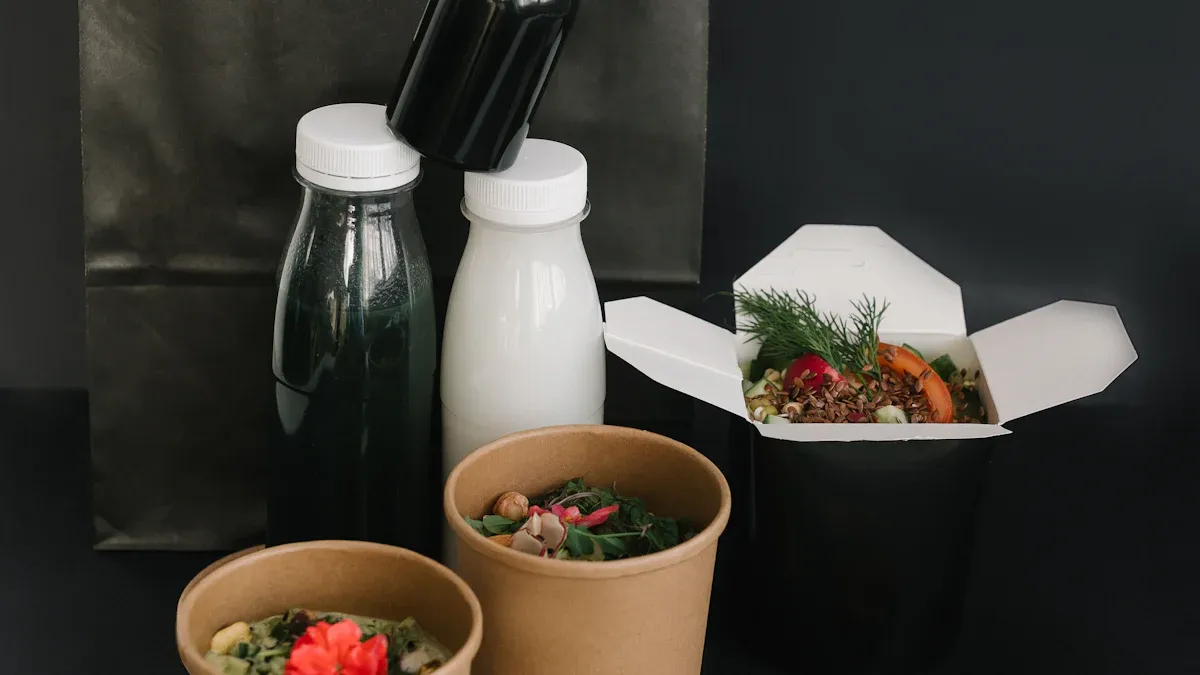
Food Packaging
Fast Food Wrappers
You need packaging that keeps up with the fast-paced world of food service. Fast food wrappers face constant exposure to oils, sauces, and moisture. When you use a fluorine-free oil repellent, you create a strong barrier that prevents grease from soaking through. This keeps food fresh and hands clean. You also support food safety and meet the expectations of health-conscious consumers. Many leading brands now choose these coatings for burgers, sandwiches, and fried snacks. The market shows that food packaging is the largest segment for fluorine-free oil repellents in 2024, driven by regulatory compliance and consumer demand for safer, sustainable options.
Liners & Bags
You rely on liners and bags to protect a wide range of foods, from baked goods to deli items. These products must resist oil and moisture while maintaining flexibility and print quality. Fluorine-free oil repellent coatings deliver reliable performance for sandwich wraps, bakery bags, and takeout liners. You can trust these solutions to keep food secure during transport and storage. Water-based and bio-based coatings are especially popular because they comply with food contact regulations and support compostability. This aligns your packaging with circular economy principles and helps you meet sustainability goals.
Tip: Choose compostable liners and bags with fluorine-free coatings to enhance your brand’s green credentials and appeal to eco-conscious customers.
Industrial & Retail
Greaseproof Wrapping
You often need greaseproof wrapping for industrial uses, such as protecting machine parts, tools, or specialty goods. These applications demand high-performance barriers that prevent oil migration and contamination. Fluorine-free oil repellent coatings provide the necessary protection without introducing persistent chemicals. You maintain recyclability and environmental safety, which is essential for companies committed to responsible manufacturing.
E-Commerce Packaging
You see rapid growth in e-commerce and ready-to-eat food delivery services. Packaging for these sectors must withstand long shipping times and varying temperatures. Fluorine-free oil repellent solutions ensure that mailers, retail bags, and delivery packaging remain clean and intact. You avoid leaks and stains, which improves customer satisfaction and protects your brand reputation. These coatings also support the recyclability and compostability of packaging, making them a smart choice for businesses focused on sustainability.
-
Common applications for fluorine-free oil repellents include:
-
Fast food wrappers
-
Sandwich and bakery bags
-
Takeout liners
-
Industrial greaseproof wrapping
-
E-commerce mailers and retail bags
-
You do not have to compromise on recyclability or environmental safety when you choose these advanced solutions. You meet market demands, regulatory requirements, and your own sustainability targets—all with one smart decision.
Market Trends

Consumer Demand
Preference for Safe Packaging
You see a clear shift in consumer expectations for food packaging. People want assurance that their packaging is free from harmful chemicals. This demand has led to significant changes in the market:
-
The European Union is preparing broad restrictions on PFAS chemicals, including those used in packaging.
-
Advocacy groups encourage retailers and fast-food chains to switch to PFAS-free packaging.
-
Retailers respond to consumer pressure by moving away from PFAS-based materials.
Market research from Grand View Research shows the global PFAS-free food packaging market reached $40.4 billion in 2024. You can expect this market to grow at a 6.5% CAGR, reaching $58.8 billion by 2030. This growth comes from rising consumer awareness about health risks linked to PFAS and regulatory actions banning these substances. Major brands and retailers now commit to eliminating PFAS from their supply chains to meet your expectations for safe, clean-label packaging.
Companies like Sweetgreen, Whole Foods, Panera Bread, and Chipotle have responded to consumer concerns by pledging to reduce or eliminate intentionally added PFAS in their packaging. Even as complete removal remains challenging, your demand for safer packaging continues to influence corporate policies and industry standards.
Clean Label Movement
You value transparency and sustainability in the products you buy. The clean label movement extends beyond ingredients to include packaging materials. Food industry professionals report strong consumer preferences for sustainable packaging:
|
Packaging Preference |
Percentage of Food Industry Professionals Reporting Consumer Preference |
|---|---|
|
Biodegradable Packaging |
|
|
Recyclable Packaging |
29% |
|
Minimal or Reduced Packaging |
21% |
|
Reusable Packaging |
18% |
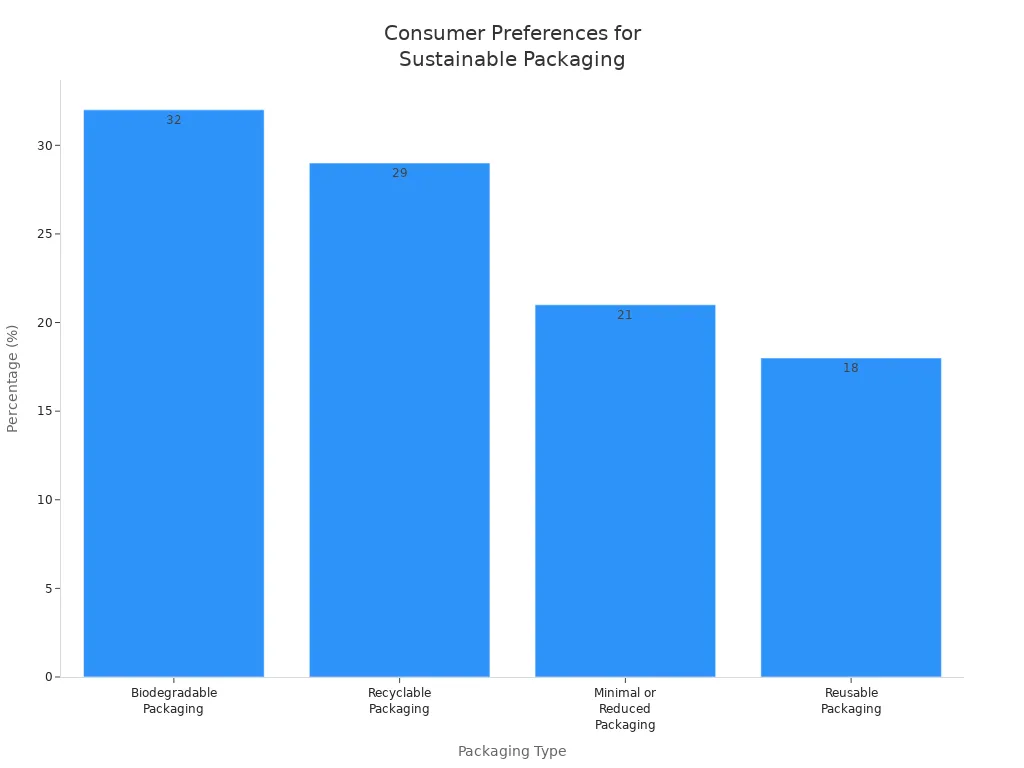
Environmental concerns, such as packaging waste, drive this movement. You expect brands to use materials that reduce environmental impact. As a result, food companies adopt packaging that supports compostability, recyclability, and reduced waste, aligning with your values and the broader clean label trend.
Industry Shifts
Competitive Advantage
You notice that leading brands gain a competitive edge by adopting fluorine-free oil repellent solutions. Industry reports show that major food brands and packaging suppliers now prioritize alternatives to PFAS-based coatings. Regulatory pressures, such as Maine’s 2023 law and the EU’s REACH restrictions, push companies to act quickly. Quick-service restaurant chains like McDonald’s have already phased out PFAS-containing packaging, choosing plant-based or synthetic polymer barriers instead.
Procurement teams increasingly require certifications like bluesign® and OEKO-TEX® to ensure compliance with sustainability and regulatory standards. Brands that innovate with safer, more durable coatings and meet evolving regulations stand out in the market. You see these companies strengthen their competitive positioning by offering products that meet your expectations for safety and environmental responsibility.
Brand Reputation
You trust brands that demonstrate a commitment to health and sustainability. Companies in the packaging sector adopt fluorine-free and PFAS-free alternatives as part of broader sustainability strategies. This shift supports safer disposal methods, such as recycling, composting, and waste-to-energy, which enhances environmental responsibility and brand reputation.
Consumer demand for environmentally friendly packaging drives brands to use PFAS-free compostable products. By complying with new environmental standards and reducing harmful chemicals, brands differentiate themselves and appeal to eco-conscious markets. You reward companies that lead in innovation, transparency, and environmental stewardship with your loyalty and positive word-of-mouth.
Transition & Cost

Implementation
Switching Processes
You want a smooth transition when adopting fluorine-free oil repellent solutions. The manufacturing process uses a traditional dip-pad-cure method. This approach is simple, environmentally friendly, and scalable for industrial use. You immerse the paper substrate in the oil repellent solution, then pass it through rollers to remove excess liquid. Afterward, you cure the coated paper at a controlled temperature. This process forms a durable, amphiphobic coating that resists both oil and water.
You may need to adjust your equipment settings or train your team to handle new materials. Understanding the chemical interactions between the coating and the paper ensures you achieve the best performance. Most facilities can adapt quickly because the dip-pad-cure method aligns with standard paper coating practices. You gain efficiency without major disruptions to your production line.
Tip: Schedule a pilot run with your supplier to test the new process and fine-tune parameters before full-scale implementation.
Supplier Selection
Choosing the right supplier is critical for a successful transition. You should evaluate suppliers based on product quality, regulatory compliance, and technical support. Look for partners who offer detailed documentation, including safety data sheets and compliance certificates for EU REACH, U.S. FDA, and China’s GB 9685 standards. Reliable suppliers provide guidance during the switch and help you troubleshoot any challenges.
Consider suppliers with a proven track record in fluorine-free technologies. Amazon Chemicals Limited, for example, offers technical expertise and ongoing support to ensure your packaging meets both performance and regulatory requirements.
Cost-Effectiveness
Long-Term Savings
You benefit from long-term savings when you invest in fluorine-free oil repellent solutions. These coatings help you avoid regulatory fines and costly recalls linked to banned substances. You also reduce waste management expenses because compostable and recyclable packaging lowers landfill fees. Over time, you build brand loyalty and attract eco-conscious customers, which can increase your market share.
You minimize operational costs by using a process that fits existing equipment. The dip-pad-cure method does not require expensive upgrades, so you keep capital expenditures low. Efficient production and fewer compliance risks translate into a stronger bottom line.
Product Options
You have access to cost-effective product options tailored to your needs. Azfc® 60F works well for dry or mildly oily foods, offering reliable oil resistance at an affordable price. For packaging that faces higher temperatures or more demanding conditions, Azfc® 90F provides enhanced heat resistance and superior barrier properties.
|
Product Name |
Ideal Application |
Key Benefit |
|---|---|---|
|
Dry/mild oil contact |
Cost-effective protection |
|
|
High heat/oily foods |
Enhanced resistance |
You can select the right formulation for each packaging type, optimizing both performance and cost. By partnering with a knowledgeable supplier, you streamline your transition and position your business for sustainable growth.
Future Outlook

Innovation
New Materials
You will see the next wave of food packaging shaped by advanced materials that prioritize both performance and sustainability. Companies now develop bio-based barrier coatings that deliver strong grease and moisture resistance without relying on fluorochemicals. These new materials often use renewable resources and support compostable or biodegradable packaging, helping you meet environmental goals and regulatory requirements.
Nature-inspired solutions also play a growing role. Scientists study natural mechanisms—like the way lotus leaves repel water—to design coatings that mimic these properties. This approach leads to packaging that resists oil and moisture while remaining safe for food contact. You benefit from packaging that not only protects food but also aligns with circular design principles, reducing waste and supporting a healthier planet.
Evolving Technologies
Emerging technologies continue to transform the packaging landscape. You can expect:
-
Bio-based coatings that match or exceed the performance of traditional PFAS-based products.
-
Compostable and biodegradable materials engineered for rapid breakdown in industrial and home composting systems.
-
Use of renewable feedstocks, such as plant fibers and seaweed, to create sustainable packaging.
-
Transparent and rigorous testing protocols to guarantee PFAS-free performance and compliance with global standards.
-
Integration of smart technologies, including sensors that monitor freshness or environmental conditions, further enhancing packaging value.
These innovations ensure your packaging solutions remain at the forefront of safety, functionality, and environmental stewardship.
Industry Leadership
Staying Ahead
You gain a competitive edge by adopting fluorine-free oil repellent technologies early. Leading companies invest heavily in research and development to expand their sustainable product portfolios. The table below highlights some of the industry leaders setting benchmarks in this space:
|
Company Name |
Role in Fluorine-Free Oil Repellent Packaging Adoption |
|---|---|
|
3M |
Global leader investing in R&D, offering high-performance, durable, and eco-friendly fluorine-free water repellents for packaging and other applications. |
|
Archroma |
Specializes in color and specialty chemicals; provides sustainable, effective fluorine-free water repellents tailored for packaging and other industries. |
|
Solvay |
Major player investing in expanding fluorine-free water repellent product portfolios, including packaging applications. |
|
BASF |
Active in fluorine-free water repellent market, contributing to sustainable packaging solutions. |
|
Evonik Industries |
Engaged in developing eco-friendly fluorine-free repellents for various industries including packaging. |
You can look to these organizations as examples of how innovation and sustainability drive industry standards. Their commitment to eco-friendly solutions positions them as benchmarks for others in the market.
Embracing Sustainability
You secure long-term business success by making sustainability a core part of your packaging strategy. Consumer demand for eco-friendly packaging continues to grow, with nearly half of U.S. shoppers avoiding products with excessive packaging and 69% seeking recyclable options. Products with environmental, social, and governance (ESG) claims outperform others, growing 28% faster over five years.
Companies that adopt circular economy models—such as refill and reuse systems—reduce waste and attract loyal customers. Material innovation, including biodegradable and seaweed-based packaging, positions you as a market leader. Strategic partnerships with retailers piloting zero-plastic and compostable solutions further enhance your brand’s reputation.
🌍 Embracing sustainability not only strengthens your brand but also opens new opportunities for growth and leadership in the evolving packaging industry.
You gain clear advantages by choosing fluorine-free oil repellent for your food packaging.
-
Major brands and institutions now lead the shift, driven by global regulations and consumer demand for safer, compostable solutions.
-
Sustainable materials and innovative designs help you reduce environmental impact, improve brand reputation, and meet evolving standards.
Take the next step. Lead your industry by adopting compliant, sustainable packaging that protects both people and the planet.
FAQ

What is a fluorine-free oil repellent?
A fluorine-free oil repellent is a coating for paper packaging that blocks oil and grease without using PFAS or other fluorinated chemicals. You get strong barrier protection while keeping your packaging safe for food contact and the environment.
How does fluorine-free oil repellent compare to PFAS-based coatings?
You achieve similar oil and moisture resistance with fluorine-free solutions. These coatings use wax or silicone to create a hydrophobic barrier. You avoid the health and environmental risks linked to PFAS, while still meeting industry performance standards.
Is fluorine-free oil repellent safe for direct food contact?
Yes. You can use fluorine-free oil repellent for direct food contact. Products from Amazon Chemicals Limited comply with EU REACH, U.S. FDA, and China’s GB 9685 standards. You ensure your packaging meets strict global safety requirements.
Can I recycle or compost packaging with fluorine-free oil repellent?
You can recycle or compost most packaging coated with fluorine-free oil repellent. These coatings do not contain persistent chemicals. Many products meet BPI and CMA compostability certifications, supporting your sustainability goals.
What types of food packaging benefit most from fluorine-free oil repellents?
You see the best results in fast food wrappers, sandwich bags, bakery liners, takeout containers, and industrial greaseproof wraps. These coatings protect against oil and moisture, keeping food fresh and packaging clean.
How do I switch to fluorine-free oil repellent in my production process?
You use a standard dip-pad-cure method. Most facilities can adapt quickly. You may need minor equipment adjustments or staff training. Your supplier can provide technical support and documentation for a smooth transition.
Are there cost-effective options for different packaging needs?
Yes. You can choose Azfc® 60F for dry or mildly oily foods. For high heat or heavy oil contact, select Azfc® 90F. Both options offer reliable protection and help you control costs.
Need more details? Contact your supplier for technical guidance and product recommendations.



